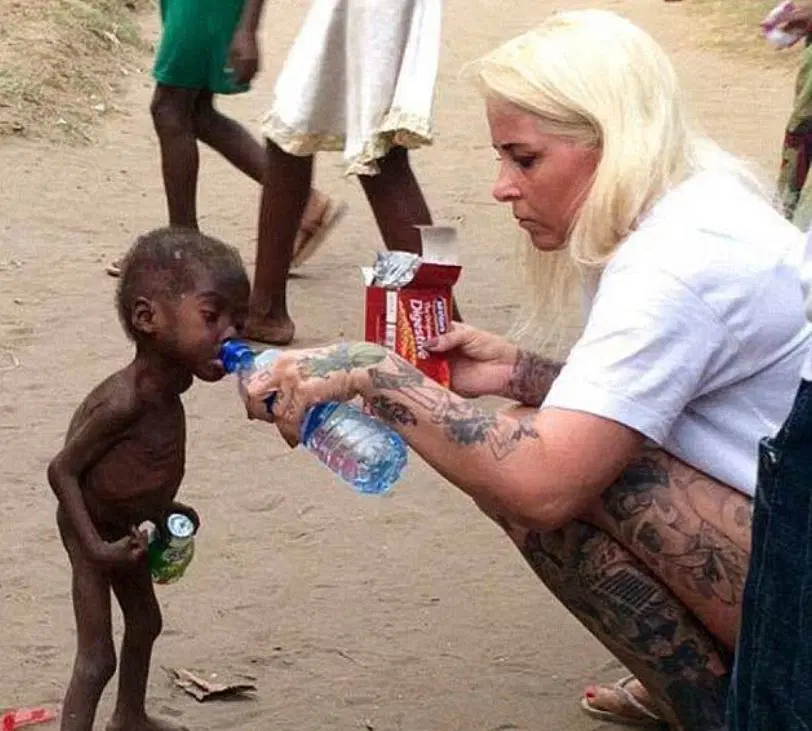Now Reading: From ‘Witch Child’ to Little Picasso: The Remarkable Journey of Hope, Once Left to Die in Akwa Ibom
-
01
From ‘Witch Child’ to Little Picasso: The Remarkable Journey of Hope, Once Left to Die in Akwa Ibom
From ‘Witch Child’ to Little Picasso: The Remarkable Journey of Hope, Once Left to Die in Akwa Ibom

Nearly a decade after the world was moved by the haunting image of a starving three-year-old Nigerian boy accused of witchcraft and left to die, that same child — now named Hope — is thriving at 12, thanks to the woman who refused to give up on him.
In 2016, Danish aid worker Anja Ringgren Loven, founder of the Land of Hope charity, found the skeletal boy abandoned on the streets of Akwa Ibom, southern Nigeria. At the time, he weighed just 3.2 kilograms and was so frail that Anja feared he would not survive the night.
“When we got to this little boy, he was smelling of death. I thought he would die in my arms,” Anja recalled. “We don’t know how he pulled through, but he did.”
From the Streets to the Studio
Hope defied every expectation. Though deaf, he communicates through writing and has become an avid artist — earning the nickname “Little Picasso” from teachers at the orphanage where he lives.
“He is now very independent, strong and intelligent — and has lots of friends,” Anja said proudly. “I’m so proud he graduated from school. He was full of pride too.”
Today, Hope dreams of a future in the arts and continues to inspire millions worldwide as a symbol of resilience and the power of compassion.
The Ongoing Battle Against Witchcraft Accusations
Experts say cases like Hope’s remain widespread in parts of Nigeria and other regions where superstition and fear drive child abuse.
Leethan Bartholomew, of the International Network Against Witchcraft Accusations and Ritual Attacks, described the situation as “a much bigger problem than we recognise.”
Similarly, Professor Charlotte Baker of Lancaster University noted that faith-based abuse occurs globally and often targets vulnerable individuals — leading to serious physical and psychological harm.
“These abuses include accusations of witchcraft, spirit possession, and ritualistic practices,” she said. “They are very difficult to detect and address, but awareness is improving.”
Hope’s story — once a global symbol of horror — now stands as one of hope, survival, and the enduring fight against ignorance and abuse.


















